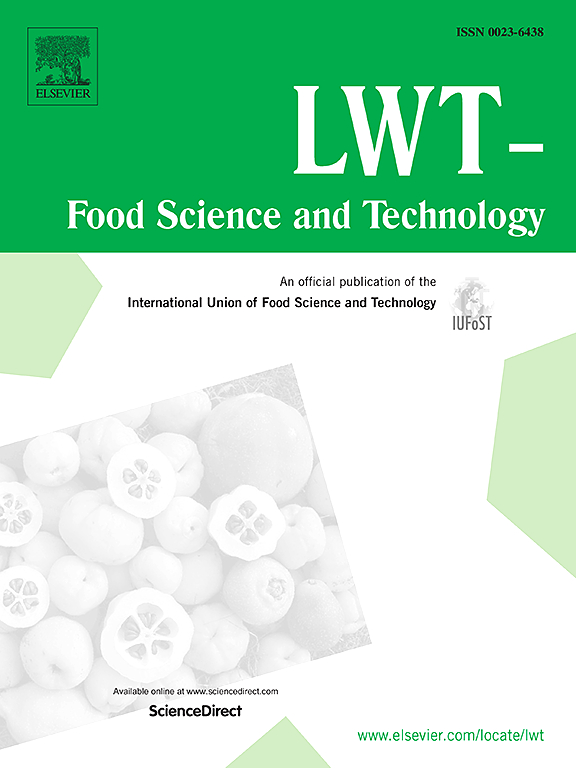苯丙酮代谢可能主导橄榄的抗黑斑病能力
IF 6
1区 农林科学
Q1 FOOD SCIENCE & TECHNOLOGY
引用次数: 0
摘要
油橄榄(Canarium album)的黑斑病严重降低了这种水果的外观品质和经济价值。在这项研究中,我们确定了一个抗黑斑病品种 "双湖香"(CS)和一个易感品种 "云芝"(CY),并研究了其潜在的抗病机理。石蜡切片分析表明,与 CS 相比,CY 果实表皮在感染黑斑病后更易破损,而扫描电镜分析表明 CS 果实上的病原体更少。这些结果表明,黑斑病抗性的差异可归因于果实表皮结构和抗菌特性的不同。通过联合转录组和代谢组分析,我们观察到 CS 中与苯丙醇代谢相关的基因(尤其是 CaPAL1 和 Ca4CL1)和代谢物(尤其是反式肉桂酸、阿魏酸和山奈酸)的富集。这些结果表明,苯丙醇代谢可能在黑斑病抗性中起着至关重要的作用。这项研究为培育抗性橄榄品种提供了理论依据和宝贵材料。本文章由计算机程序翻译,如有差异,请以英文原文为准。
Phenylpropanoid metabolism may dominate the black spot resistance of Chinese olive (Canarium album)
The black spot of Chinese olive (Canarium album) seriously reduces the appearance quality and economic value of this fruit. In this study, we identified a black spot resistant variety called ‘Shuanghuxiang’ (CS) and a susceptible variety called ‘Yunzhi’ (CY), and investigated the underlying resistance mechanisms. Paraffin sectioning analysis indicated greater susceptibility of CY fruit epidermis to breakage post black spot infection compared to CS, with SEM analysis showing lower pathogen presence on CS fruits. These results revealed that the variation in black spot resistance could be attributed to differences in fruit epidermis structure and antimicrobial properties. Through conjoint transcriptomic and metabolomic analyses, we observed enrichment of genes (particularly CaPAL1 and Ca4CL1) and metabolites (particularly trans-cinnamate, ferulic acid and sinapate) related to phenylpropanoid metabolism in CS. These results indicated that the phenylpropanoid metabolism may play a crucial role in black spot resistance. This study provides theoretical basis and valuable material for the breeding of resistant varieties of Chinese olive.
求助全文
通过发布文献求助,成功后即可免费获取论文全文。
去求助
来源期刊

LWT - Food Science and Technology
工程技术-食品科技
CiteScore
11.80
自引率
6.70%
发文量
1724
审稿时长
65 days
期刊介绍:
LWT - Food Science and Technology is an international journal that publishes innovative papers in the fields of food chemistry, biochemistry, microbiology, technology and nutrition. The work described should be innovative either in the approach or in the methods used. The significance of the results either for the science community or for the food industry must also be specified. Contributions written in English are welcomed in the form of review articles, short reviews, research papers, and research notes. Papers featuring animal trials and cell cultures are outside the scope of the journal and will not be considered for publication.
 求助内容:
求助内容: 应助结果提醒方式:
应助结果提醒方式:


